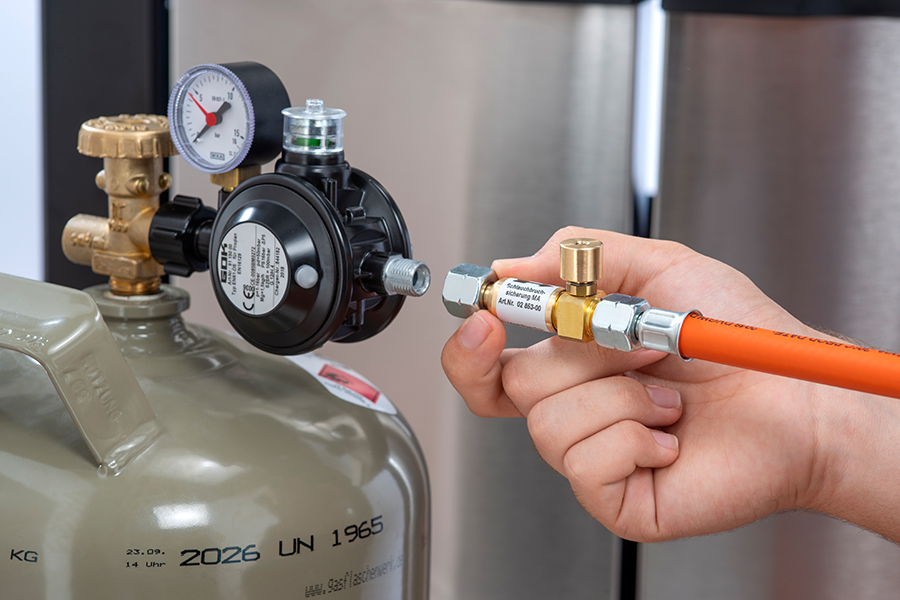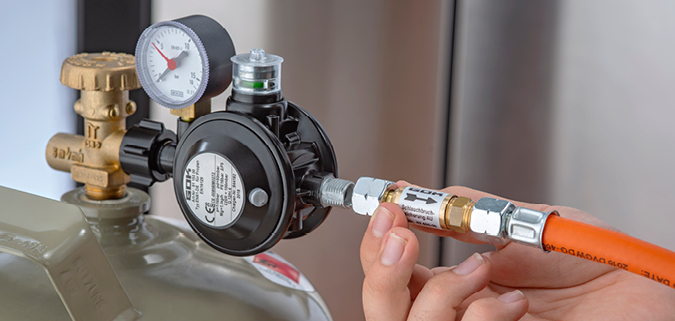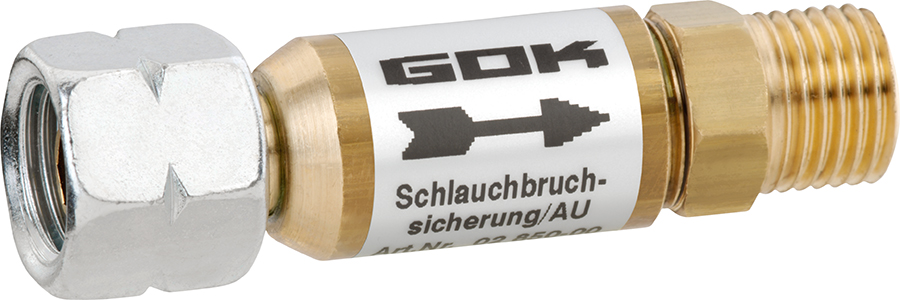How does an excess flow device work?
The excess flow device is a safety device in LPG systems which protects against uncontrolled gas escape should there be a massive leak in a hose assembly. So far, so good. But how exactly does the safety device actually work and how does it detect when it needs to block the gas supply?
An excess flow device, for short: SBS, is basically comparable to a so-called aquastop for a washing machine. If a leak occurs there, the aquastop valve immediately interrupts the water supply.
Similar function
The SBS works in a similar way. As soon as a massive leak occurs on the downstream hose assembly, it activates a closing taper in the fitting. This shuts off the gas supply so that no LPG can escape uncontrolledly.

The operator connects the excess flow device – here: the manual version – directly to the outlet of the pressure reducer.
When does the safety device respond?
Every SBS, regardless of whether it is an individual component in the LPG system or already integrated into the pressure regulator, is designed for a specific switching point. For example, the standard excess flow device for small cylinder systems (including to operate a gas barbecue, radiant heater or outdoor heater) for 1.5 kilograms of LPG per hour at an outlet pressure of 50 millibar.
Threshold 10 percent
If there is a leak in the hose assembly and the actual flow rate is around 10 percent higher than the nominal flow rate of 1.5 kilograms per hour, the SBS shuts off the gas supply.





